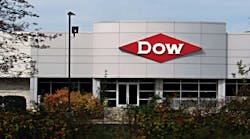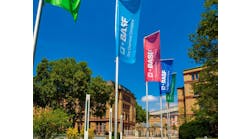Similar to BASF and others, Dow is in the early stages of evaluating Ethernet-APL at two laboratories, one in Houston with one temperature and two flow devices, and another it’s presently setting up in the Netherlands with one positioner and two temperature devices.
“We want to learn how Ethernet-APL can provide more data, how easy it is to swap devices, how it may enable plug-and-play, and how the system can be vendor-agnostic. We want to understand Ethernet-APL and determine its value for Dow,” says Macarmen Molina, hardware lead in the digital operations center at Dow and co-lead of the NAMUR APL Task Force. “We’re examining if its technology stack behaves as intended, and testing whether it’s easier to maintain than 4-20 mA.”
Molina reports that Ethernet-APL is just a physical-layer highway with a technology stack on top that includes:
- Ethernet-based communication protocols like Profinet and EtherNet/IP;
- Standardized device drivers to simplify integration;
- Field Device Integration (FDI) communication server information model; and
- Process Automation Device Information Model (PA-DIM) for standardized data access to make use of data from new architectures.
“This full set of capabilities was promised 20 years ago, but each attempt failed since then,” says Molina. “Potential users hesitate when faced with ‘just another fieldbus,’ but Ethernet-AP isn’t just another fieldbus. Ethernet-APL will keep its promise of easier engineering, operations and maintenance of digital communications in the field.”
While some users might question why they can’t just use regular Ethernet in hazardous areas, Molina emphasizes that it isn’t intrinsically safe (IS), it requires a second cable and connection for power, and can only go 100 meters, while Ethernet-APL can have 200-meter spurs in the field and 1,000-meter trucks. To gain these benefits, as well as more varied data delivered far more quickly, she recommends that users familiarize themselves with Ethernet-APL by studying its engineering guideline and the NAMUR NE 168 specification, “Requirements of an Ethernet-based communication system for the field device level”, and then trying it in their labs, experimental applications and other small areas.
“Because Ethernet-APL is ready to plug in, 100% of its information can be available on the first day by using the second communication channel, instead of users slowly gaining more over their device or plant’s lifecycle,” adds Molina. “This makes Ethernet-APL valuable at plant design and engineering stages, too. Previously, users would acquire more data incrementally during operating stages, but this isn’t efficient. Day 1 connectivity and signal identification with Ethernet-APL is more useful. It also allows users to bring in a second communication channel, which lets it enable the NAMUR Open Architecture (NOA) and get rid of old gateways and data maps.”
Emanuel Trunzer, automation engineer at BASF’s Center of Technical Expertise for Automation Technology and member of the NAMUR APL Task Force, adds that interested users can consult the NAMUR APL Task Force, and ask its members to share their experiences. “We’re all in the same boat, and we’ll only succeed together as a community of end-users and vendors,” he says. “About 90% of us are willing to share our results and conduct lab tours because we want to share what we’ve learned about Ethernet-APL with the world. We know it’s game over if it’s only us, and that we’ll only succeed if everyone participates. All users need to speak with the same voice to get what we all need.”





